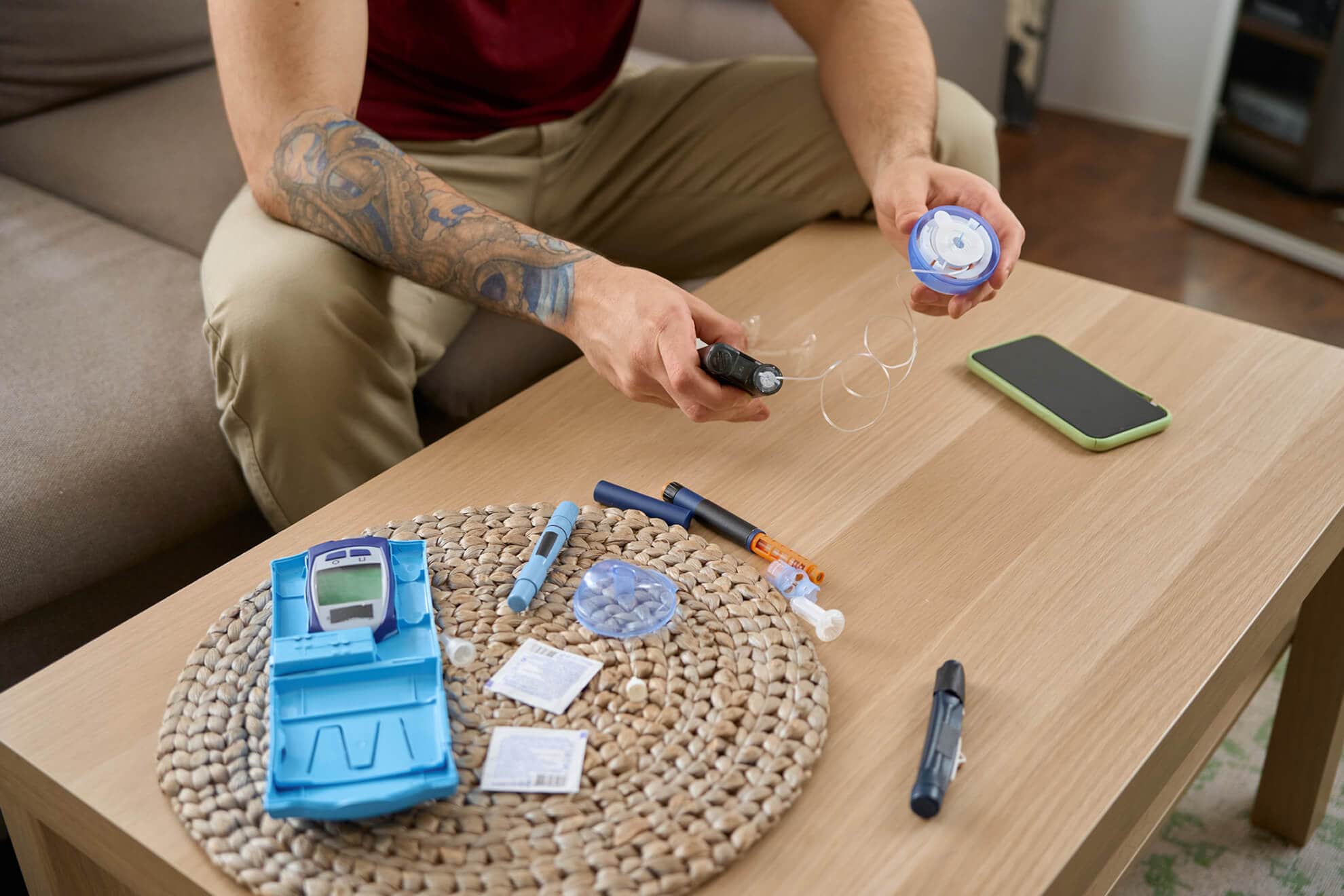According to the World Health Organization, an estimated 422 million people worldwide are currently living with a diabetes diagnosis, having steadily trended upwards in recent decades. Considering the rising prevalence of DSA diabetes, there have been significant advances in diabetes management technology that supports constant glycemic control to prevent ketoacidosis. The availability of insulin pumps and constant glucose monitors (CGMs) are especially crucial for type 1 diabetics, in which the pancreas can no longer create enough insulin on its own. Medical device clinical trials are testing a variety of new glycemic control systems and garnering growing interest from biotech sponsors and contract research organizations (CROs). For the most up-to-date look at today’s landscape of glycemic control tools, read more below!
Diabetes Medical Devices
Smart Pens and Pen Caps
Digital pen systems for administering insulin are a convenient tool for diabetes management, and they have come a long way since the original versions. To date, the Food and Drug Administration (FDA) has approved InPen, a Bluetooth-enabled smartpen from Medtronic, and an original pen cap device, Bigfoot Unity. These devices communicate with CGMs to gather patients’ glucose values and calculate the recommended insulin dose to release from prefilled cartridges. Associated apps with Bigfoot Unity also help store long-term data for real-time remote monitoring by healthcare teams. With intricate alarm systems built internally into these tools, individuals whose lives depend on insulin administration can ensure they are receiving the right dose at the right time. Many other biotech and biopharma companies are developing their own smart insulin pens, suggesting this may become more commonplace in the future of diabetes management.
Continuous Glucose Monitors (CGMs)
CGMs are small machines that measure an individual’s glucose level periodically every few minutes through a sensor that is placed in the skin subcutaneously. Unlike traditional finger prick methods, CGMs have enzyme-based biosensors that can measure glucose levels without invasive venipuncture. When the enzyme glucose oxidase detects any glucose present in the interstitial fluid between cells, the resulting electrochemical signals are read by the CGM receiver; the greater the current, the higher the clinical glucose measurement.
However, today’s CGM systems are so much more than its sensor; this technology can now predict the short-term trends of a patient’s glucose levels to assist with adjusting the correct required dose of fast-acting insulin. CGMs can also be seamlessly paired with a patient’s Bluetooth devices, as well as other insulin delivery tools, to be able to communicate data or provide hypo- or hyperglycemia alerts instantly. These systems ultimately help patients painlessly track their glycemic control throughout the day with the use of intermittent or real-time detection software.
Insulin Pumps
Insulin pumps are also known as continuous subcutaneous insulin infusion (CSII) therapy because they mimic the natural secretion of insulin in the body better than insulin injections. These can be classified either as tubed or tubeless, also known as patch, systems. With the former, the pump contains an insulin cartridge and is connected to the patient’s infusion site with a tube; in contrast, tubeless systems house the cartridge and infusion site together and have an external controller.
To date, insulin pump models offer a variety of features, including compatibility with common CGMs, programmable settings to calculate customized insulin doses with precision, slim portable designs, and reliable Bluetooth connectivity to enable real-time glycemic control oversight by patients and their healthcare teams. As more insulin pump clinical trials are conducted to test new features, diabetics will have more choices to manage their disease with insulin delivery systems designed with comfort, convenience, and cost in mind.
Diabetes Management: Considering Quality of Life
Being a chronic condition, effective disease management tools are essential for ease of use in day-to-day life for diabetes patients. Although many other disorders rely on innovations in drug discovery for improving clinical care, helping optimize treatment delivery and disease monitoring technology is equally important. CROs and sponsors recognize that traditional techniques for managing diabetes can take a toll on the body. Therefore, the advances discussed here are playing a valuable role in giving patients numerous safe, effective, non-invasive options to track their glycemic control. As diabetes technology continues to shift, these developments will hopefully become more widely adopted and accessible for the global diabetes population.
The Vial Medical Device CRO
Vial is a full-service CRO that recognizes the central role of technology in the future of diabetes management and is paving the way for modernized drug development research through digital innovation. The Vial Medical Device CRO is delivering shorter study timelines, quality affordable services, and a clinical trial experience that puts patients and sponsors first. Contact a team member today to discover how we can help with your next medical device trial!



